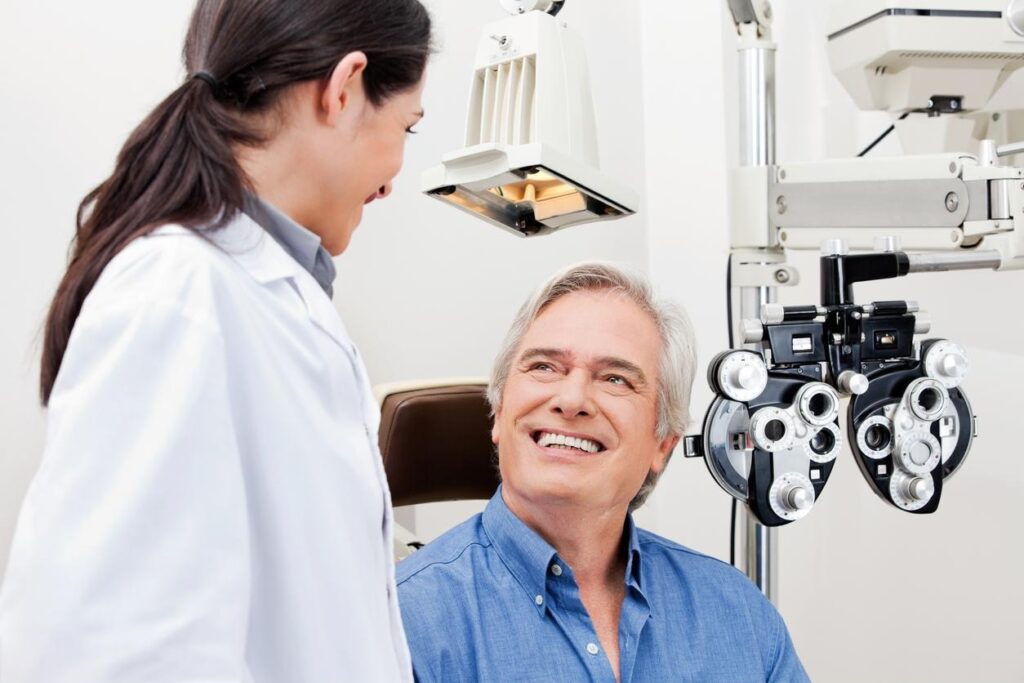Getting older doesn’t mean giving up on clear vision. Far from it. But your eyes do evolve, and sometimes in ways that creep in without much warning. That’s why regular optometrist visits aren’t just another health box to tick. They’re your front-line defence against issues that can sneak up on you.
So, what are the ins and outs of eye care as you age? Keep all these in mind as you look for top-notch optometrists in Sydney.
The Basics Still Matter—But They Go Deeper Now
Yes, your optometrist will still get you to read those familiar letters on the chart. But beyond the standard vision test, things get a bit more detailed.
Expect to kick things off with a chat, not just about your eyes, but your general health too. High blood pressure, diabetes, and even some neurological conditions can show up in your eyes long before they cause any obvious symptoms.
Don’t be surprised if the appointment runs a bit longer than it used to. Your optometrist will get even more thorough, because when it comes to ageing eyes, the devil’s often in the details.
Common Age-Related Vision Changes Your Optometrist Will Look For
Like the rest of you, your eyes are going through changes. Here’s what your optometrist is keeping tabs on:
- Presbyopia – That moment you find yourself holding the menu at arm’s length. This age-related shift in near vision usually kicks in during your 40s and 50s.
- Cataracts – A gradual clouding of the lens, often so slow you don’t notice until night driving becomes a bit dicey.
- Dry eye – Tear production drops with age, leaving your eyes feeling like they’ve done a stint in a dust storm.
- Reduced contrast sensitivity – That fuzzy grey blur you get when trying to make out black writing on a dark background? This one’s to blame.
None of these changes automatically mean serious trouble. But left unmonitored, they can sneak up and start interfering with daily life. Your optometrist’s job is to get ahead of them, and yours is to show up and let them.
The Eye Pressure Check (and Why It’s Not Just a Puff of Air)
Ah yes, the puff test. The part most people brace themselves for. That tiny burst of air might seem harmless (or mildly annoying), but it’s measuring intraocular pressure—a key factor in detecting glaucoma.
As you age, the risk of glaucoma rises, and it usually doesn’t show symptoms early on. That’s why your optometrist might also use a tonometer or advanced imaging to get a clearer picture of what’s happening inside your eye.
Advanced Imaging: Not Sci-Fi, Just Smart Eye Care
These days, optometrists can see what’s going on beneath the surface of your eye using tools like Optical Coherence Tomography (OCT) and retinal photography. These scans give a cross-sectional image of your retina, helping spot early signs of conditions like macular degeneration or diabetic eye disease.
More Time, More Questions—That’s a Good Thing
As you age, your optometrist won’t just be ticking boxes. They’ll be asking about things like falls, how you’re managing glare while driving, or if you’re squinting more often when reading. Keep in mind that a seemingly minor annoyance like struggling with glare could point to something bigger. Or, it might just mean you need a lens coating that cuts the dazzle. Either way, more time spent talking means more tailored care.
What to Bring With You for the Visit
Want to make your visit smoother and more effective? A few simple prep steps can make a world of difference:
- Your current glasses or contact lenses – Even if you only wear them at the movies
- A list of medications – Including over-the-counter or herbal supplements
- A bit of family medical history – Particularly when it comes to eye conditions like glaucoma or diabetes-related eye issues
Eyes Change, But the Care Shouldn’t Be Complicated
Getting older throws a few curveballs. But when it comes to your vision, the right optometrist can make navigating those changes feel like less of a hassle and more of a helping hand (as it should).
With modern tools and a bit of old-fashioned care, you’ll walk out not just seeing clearer but also feeling a little clearer. If your last eye test was before smartphones were a thing, consider this your friendly nudge.



